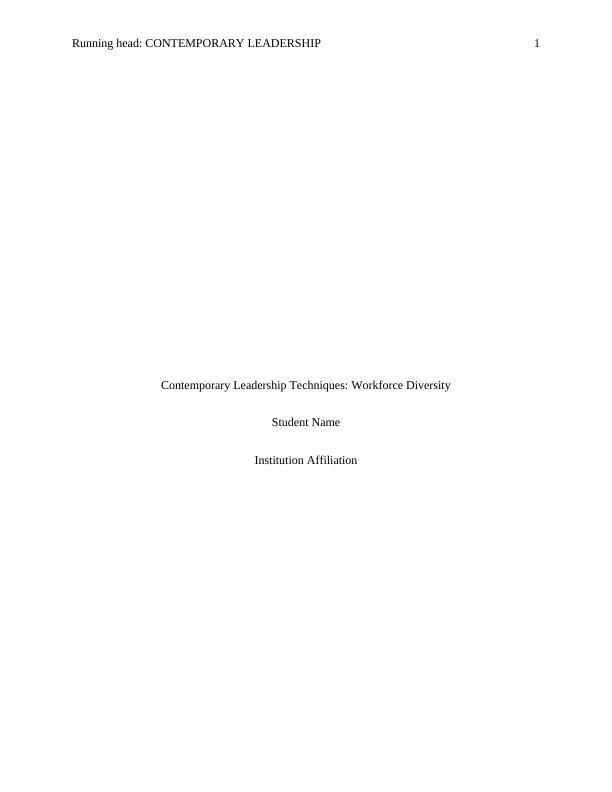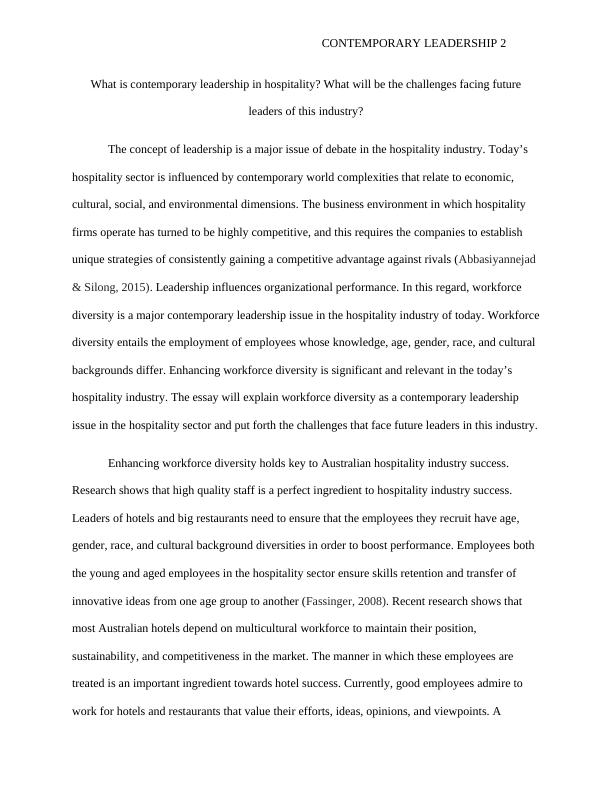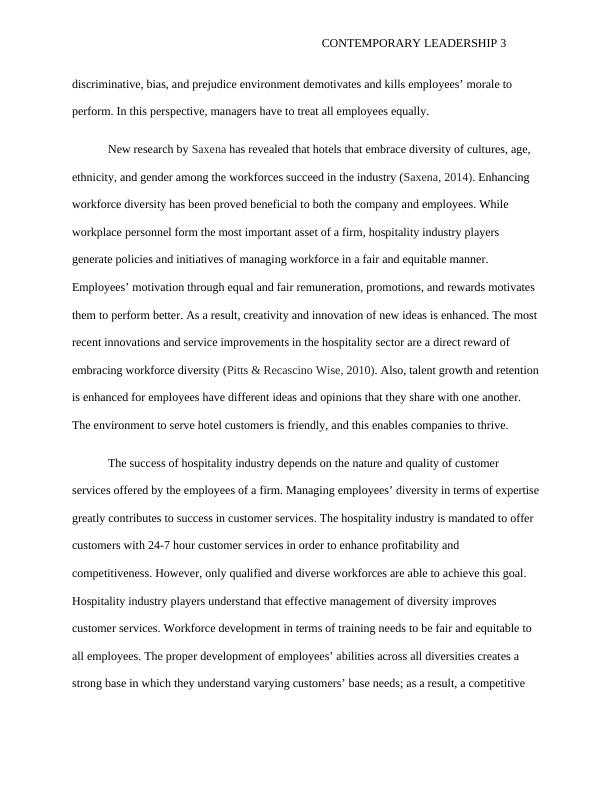Contemporary Leadership Techniques: Workforce Diversity
Write a 2000 word essay exploring contemporary leadership in hospitality and the challenges facing future leaders of the industry.
11 Pages2934 Words343 Views
Added on 2023-06-11
About This Document
The essay explains workforce diversity as a contemporary leadership issue in the hospitality sector and put forth the challenges that face future leaders in this industry.
Contemporary Leadership Techniques: Workforce Diversity
Write a 2000 word essay exploring contemporary leadership in hospitality and the challenges facing future leaders of the industry.
Added on 2023-06-11
ShareRelated Documents
End of preview
Want to access all the pages? Upload your documents or become a member.
Workforce diversity Assignment PDF
|7
|1789
|39
Inclusive Leadership in IHTI - Rhetoric or Reality?
|4
|567
|193
Issues in Human Resource Management: Contemporary Challenges, Job Description and Person Specification, Performance Management in Intercontinental Hotel Group
|16
|4990
|410
Comparison of Change Management Models in Service Industries
|1
|800
|67
Internal and External Factors Influencing Management Styles in the Service Industry
|1
|1539
|33
Cultural Tourism and Heritage Management
|7
|2224
|209




